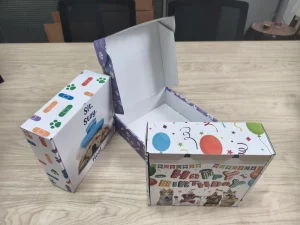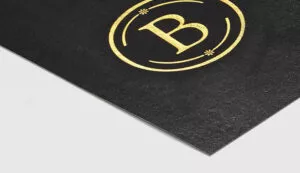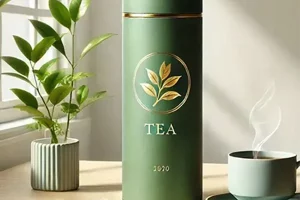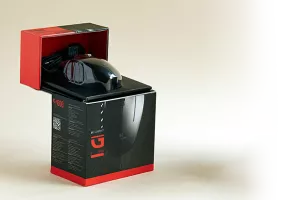Have you ever wondered about the difference between a carton and a cardboard box? While they may seem similar, there are some important distinctions.
Cartons and cardboard boxes are often used interchangeably, but the term "carton" typically refers to a type of box made from paperboard. "Cardboard box," on the other hand, refers to a more general term for a box made from thicker, corrugated material.

Let’s dive deeper into the difference between cartons and cardboard boxes, and see why understanding this distinction can be helpful for your packaging needs.
What is the difference between a carton and a cardboard box?
When you’re looking for packaging solutions, understanding the difference between a carton and a cardboard box can save you time and money.
A carton is often made from paperboard, which is lighter and thinner than the corrugated material used in cardboard boxes. Cardboard boxes have an extra layer of fluted paper between two liners, making them stronger.

The main difference between cartons and cardboard boxes lies in their material construction. Cartons are made from paperboard, which is a single-layer material, while cardboard boxes are typically made from corrugated fiberboard. The key to this difference is the fluted paper layer inside a cardboard box, which gives it more strength and durability. This makes cardboard boxes a better option for heavier or fragile items, as they provide additional protection during shipping.
Paperboard, used for cartons, is lighter and thinner, often used for products that don’t require as much protection. Examples include cereal boxes, retail packaging, or other consumer goods packaging. The single-layer design of cartons makes them ideal for lightweight products and more cost-effective for businesses.
On the other hand, cardboard boxes, with their multiple layers, are designed to withstand more pressure and impact. The added fluted layer provides cushioning, which is essential for transporting products in bulk or over long distances. Additionally, the corrugated design allows for easier stacking, reducing the risk of damage during storage and transit.
In summary, while both cartons and cardboard boxes are paper-based packaging, the strength and durability of cardboard boxes make them the preferred choice for heavier, more sensitive items, while cartons are better suited for lighter, less fragile goods.
What are the disadvantages of cardboard boxes?
Despite their widespread use, cardboard boxes come with their own set of disadvantages that could impact your packaging decisions.
Cardboard boxes, although strong and versatile, can be less durable in certain environments, such as humid conditions. They can also be prone to crushing and might not be the best choice for long-term storage.

While cardboard boxes are undoubtedly popular due to their strength and eco-friendliness, they do have some notable drawbacks. One of the major disadvantages is their vulnerability to moisture. Cardboard, being a paper-based material, can absorb water easily. This can weaken the structure of the box, leading to potential damage to the contents inside. This is especially problematic in humid environments or when exposed to rain during transit.
Another issue with cardboard boxes is their susceptibility to crushing. If the box is not packed properly or is exposed to heavy pressure during shipping or storage, it can lose its shape and compromise the protection of the product inside. This can result in damage to fragile items or create difficulties when trying to stack boxes efficiently.
Additionally, cardboard boxes are not always the most suitable option for long-term storage. Over time, the material can degrade, especially when exposed to light, moisture, or temperature fluctuations. As the cardboard becomes weaker, it may not provide sufficient protection, and your products might suffer as a result.
Lastly, cardboard boxes, though recyclable, are not always the most environmentally friendly option compared to alternatives like biodegradable plastics. Despite the eco-friendly aspects of cardboard, the production process still consumes a significant amount of resources, including water and energy, which can offset some of the sustainability benefits.
Why are cardboard boxes so expensive?
If you’ve ever wondered why cardboard boxes can be so pricey, you’re not alone. Several factors contribute to the cost of these packaging materials.
The cost of cardboard boxes is influenced by raw material prices, manufacturing processes1, and environmental factors. The quality of the box and the complexity of the design can also add to the price.

There are several factors that drive up the cost of cardboard boxes. One of the primary reasons is the price of raw materials. The production of cardboard boxes requires wood pulp, which is used to create paperboard and corrugated fiberboard. Fluctuations in the cost of raw materials, such as timber or recycled paper, can have a direct impact on the price of cardboard boxes. Additionally, the demand for these materials often rises and falls, influencing the cost.
Manufacturing processes also play a significant role in the cost of cardboard boxes. The production of corrugated fiberboard, for example, requires specialized machinery and energy-intensive processes. The layering of materials, the fluting, and the shaping of the box all add to the complexity of production. Custom designs, such as printing or embossing, further increase the cost. These processes require both time and skilled labor, which adds up to a higher price for the final product.
Environmental factors also contribute to the cost of cardboard boxes. As more businesses and consumers focus on sustainability, there is a greater demand for eco-friendly packaging materials. This often means using recycled materials, which can be more expensive to source and process than virgin paperboard. Additionally, the transportation of cardboard boxes involves significant energy consumption, further driving up costs.
In short, while cardboard boxes may seem simple, a variety of factors, from raw materials to manufacturing processes, contribute to their high cost.
Is carton packaging better than plastic?
With the rise in eco-consciousness, many people are wondering if carton packaging is a better choice than plastic. Let’s explore the pros and cons of both materials.
Carton packaging is often considered more environmentally friendly than plastic due to its recyclability. However, plastic packaging2 is more durable and can offer better protection in certain conditions.

When comparing carton packaging to plastic, several factors come into play. Carton packaging is often preferred for its eco-friendly qualities3. Since cartons are typically made from paperboard or cardboard, they are biodegradable and recyclable. This makes them a popular choice for environmentally conscious brands. Carton packaging also tends to have a lower carbon footprint during production, especially when recycled materials are used.
On the other hand, plastic packaging is known for its durability. It is resistant to moisture, temperature fluctuations, and physical damage. This makes plastic a better option for products that need extra protection, such as electronics or food items. Plastic packaging can also be more lightweight and flexible, which is an advantage when it comes to storage and shipping efficiency.
However, plastic has significant environmental drawbacks. It is not biodegradable and can take hundreds of years to break down in landfills. While some plastics are recyclable, the rate of plastic recycling is still relatively low compared to paper-based products. Additionally, the production of plastic is energy-intensive and contributes to pollution.
In conclusion, while carton packaging4 is generally more sustainable, plastic packaging offers better protection in certain cases. The choice between the two depends on the specific needs of the product being packaged and the environmental goals of the brand.
Who is the largest manufacturer of cardboard boxes?
When it comes to the production of cardboard boxes, there are some key players in the market. Who is the largest manufacturer of these essential packaging materials?
The largest manufacturers of cardboard boxes include companies like International Paper, WestRock, and Smurfit Kappa. These companies dominate the global packaging industry.

The cardboard box manufacturing industry is led by several global giants, with International Paper, WestRock, and Smurfit Kappa being the largest players in the market. These companies have established themselves as leaders in the production of cardboard boxes and other packaging materials.
International Paper, based in the United States, is one of the world’s largest manufacturers of paper and packaging products. The company operates in more than 24 countries and produces a wide range of products, including corrugated boxes, paperboard, and other sustainable packaging solutions. International Paper is known for its commitment to sustainability and eco-friendly practices, with a focus on reducing waste and energy consumption in its manufacturing processes.
WestRock is another major player in the kartonová krabice manufacturing industry. With a strong presence in North America and Europe, WestRock specializes in corrugated packaging and has a wide portfolio of products, including custom-designed boxes and retail-ready packaging. The company prides itself on its innovative approach to packaging design and its ability to provide tailored solutions to meet the unique needs of its customers.
Smurfit Kappa, headquartered in Ireland, is one of the leading manufacturers of corrugated cardboard packaging in Europe and Latin America. The company is known for its commitment to sustainability and its efforts to reduce the environmental impact of packaging. Smurfit Kappa’s focus on innovation and high-quality production has helped it maintain a dominant position in the global packaging market.
Conclusion
Understanding the differences between carton and cardboard boxes can help you make more informed decisions about packaging. Whether you’re considering cost, durability, or sustainability, the right choice depends on your product needs.
-
Exploring manufacturing processes reveals the complexities involved in producing cardboard boxes, shedding light on their pricing. ↩
-
Learn about the environmental challenges posed by plastic packaging and its long-term effects. ↩
-
Discover the key characteristics that define eco-friendly packaging materials and their importance. ↩
-
Explore the benefits of carton packaging and its impact on sustainability compared to plastic. ↩








